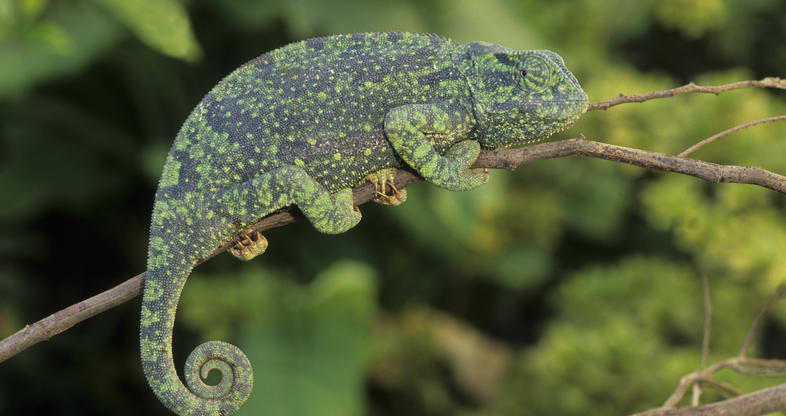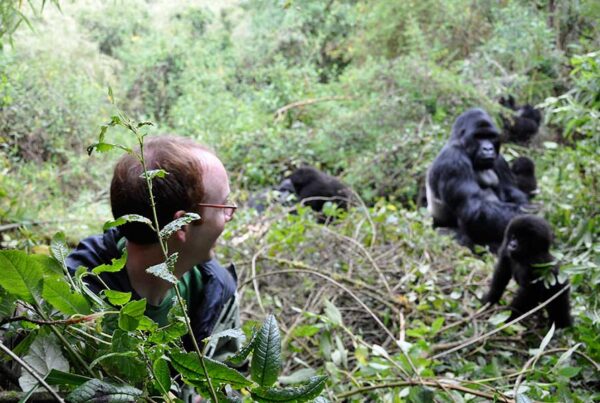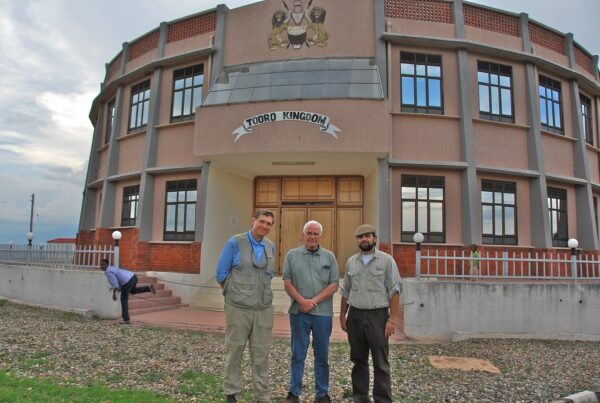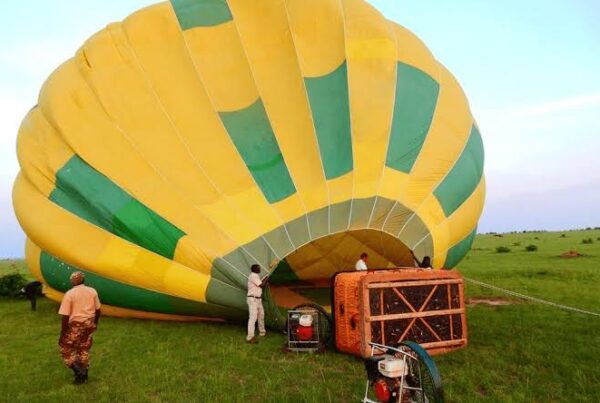Introduction to the Facts About the Flap neck Chameleon
In the vast savannas and woodlands of sub-Saharan Africa dwells an elusive creature that looks more like a mythical forest spirit than a reptile — the Flap-neck Chameleon (Chamaeleo dilepis). With its slow, deliberate movements, independently rotating eyes, and extraordinary ability to change color, this chameleon is nothing short of a biological marvel.
Among the most widespread chameleon species in Africa, the flap-neck is a master of camouflage, a skilled predator, and an evolutionary wonder with traits that continue to fascinate scientists and nature lovers alike. Despite its quiet demeanor, this species plays an active and essential role in the ecological balance of its environment.
In this article, we delve into five astonishing facts that make the flap-neck chameleon one of the most unique creatures on the continent.
1. Color Changing: More Than Just Camouflage
One of the most iconic features of any chameleon is its ability to change color. But contrary to popular belief, this isn’t solely about blending into their surroundings. For the flap-neck chameleon, color change serves several purposes:
- Thermoregulation: Dark colors help absorb heat in cooler conditions, while lighter hues reflect sunlight during hot periods.
- Communication: Brighter colors may indicate stress, aggression, or a readiness to mate.
- Camouflage: Of course, these reptiles still use their color palette to blend into vegetation and avoid predators.
This incredible ability stems from specialized skin cells called iridophores that contain nanocrystals. By adjusting the spacing between these crystals, flap-neck chameleons can reflect different wavelengths of light — essentially “repainting” themselves in real time.
2. Vision That Sees the World Differently
If you’ve ever watched a chameleon up close, you’ve likely noticed its independently rotating eyes. Each eye can move in a different direction, giving the flap-neck chameleon a full 360-degree view of its surroundings without moving its head.
Even more fascinating is their depth perception and binocular vision. When locking onto prey, both eyes can focus together to provide precise targeting, allowing them to strike with pinpoint accuracy.
Their eyes are capable of detecting ultraviolet light, helping them:
- Identify mates or rivals more effectively.
- Detect prey more vividly under dappled light conditions.
- Navigate their environment with enhanced clarity.
The flap-neck’s vision is a vital asset in both hunting and avoiding predators like snakes and birds of prey.
3. The Fastest Tongue in the African Bush
When it comes to feeding, the flap-neck chameleon doesn’t stalk or chase its prey. Instead, it relies on one of nature’s most powerful projectile weapons: its tongue.
The chameleon’s tongue can extend to nearly twice the length of its body and strikes its target in a fraction of a second — faster than the blink of a human eye.
This feat is made possible by a muscular, accordion-like structure powered by an elastic recoil mechanism. At the tip of the tongue is a sticky, suction-cup-like pad that traps prey such as:
- Grasshoppers and crickets
- Flies and beetles
- Occasionally small lizards or frogs
The speed, accuracy, and power of this tongue are among the most advanced in the animal kingdom, making the flap-neck chameleon a highly efficient insectivore.
4. Unique Locomotion and Defense Strategies
Flap-neck chameleons move in a deliberate, swaying manner — a behavior that mimics the motion of leaves rustling in the wind. This type of locomotion, along with their color adaptation, helps them evade predators like birds, snakes, and small carnivores.
Additional defense adaptations include:
- Flap-like extensions on the neck (hence the name) that can be puffed out to appear larger and more intimidating.
- Hissing and mouth-gaping when threatened.
- Tail curling and body inflation to confuse predators.
While they may not be fast runners, flap-neck chameleons rely on these defense strategies to navigate the dangers of the African bush.
5. Widespread Yet Vulnerable (Facts About the Flap neck Chameleon)
Found throughout much of southern, central, and eastern Africa, flap-neck chameleons inhabit savannas, forests, and even suburban gardens. Despite their widespread range, they face several threats:
- Habitat loss due to agricultural expansion and urbanization.
- Illegal pet trade, where individuals are captured and exported globally.
- Pesticides and vehicle collisions that impact local populations.
Conservation efforts emphasize educating communities on the ecological role of chameleons and discouraging illegal wildlife trade. Luckily, the species is currently listed as Least Concern by the IUCN, but local populations can still be fragile.
Conclusion of the Facts About the Flap neck Chameleon
The flap-neck chameleon is an extraordinary symbol of adaptation, stealth, and precision in Africa’s rich ecosystems. From its vibrant color-changing skin to its high-speed tongue and panoramic vision, this reptile continues to intrigue biologists, travelers, and storytellers alike.
Though often hidden in the foliage, it plays an indispensable role in insect control and ecological balance. Observing a flap-neck chameleon in its natural habitat is a truly rewarding experience — a silent reminder of nature’s wonders hiding in plain sight.
See the Flap neck Chameleon in the Wild
Ready to witness this marvel up close? Whether you’re trekking through the miombo woodlands or exploring savanna trails, the flap-neck chameleon is just one of many treasures waiting to be discovered.
Book your African safari with WildHorn Africa — your premier partner for ethical, expertly guided wildlife adventures across the continent.
With WildHorn Africa, you don’t just travel — you connect with the heartbeat of nature.
Start your journey today. Explore more. Discover deeper. Choose WildHorn Africa.
Facts About the Flap neck Chameleon #5 Fascinating Facts About the Flap neck Chameleon





 WildHorn Africa – Authentic and unforgettable tours across Africa, guided by local experts who know the land, wildlife, and culture best.
WildHorn Africa – Authentic and unforgettable tours across Africa, guided by local experts who know the land, wildlife, and culture best.


